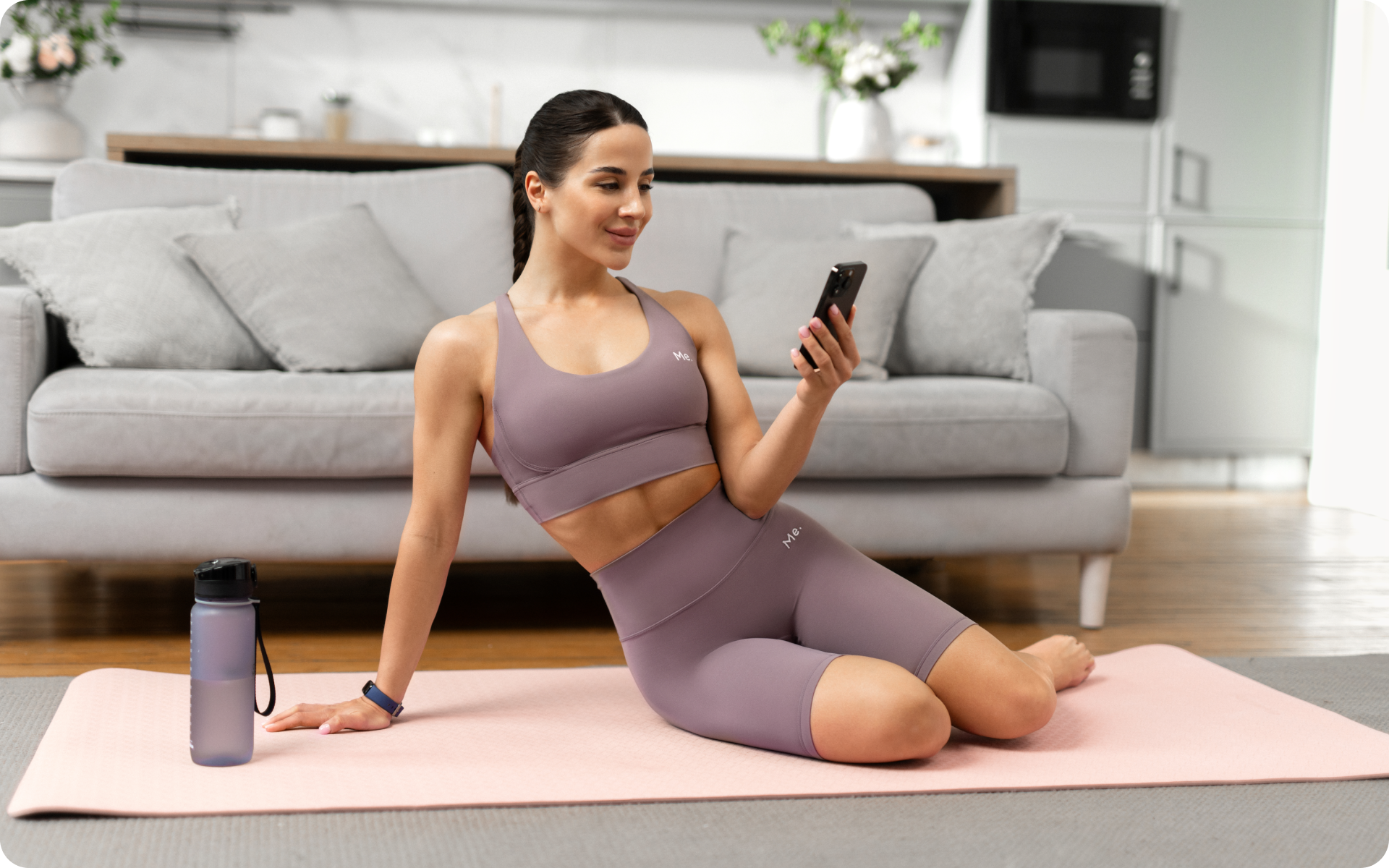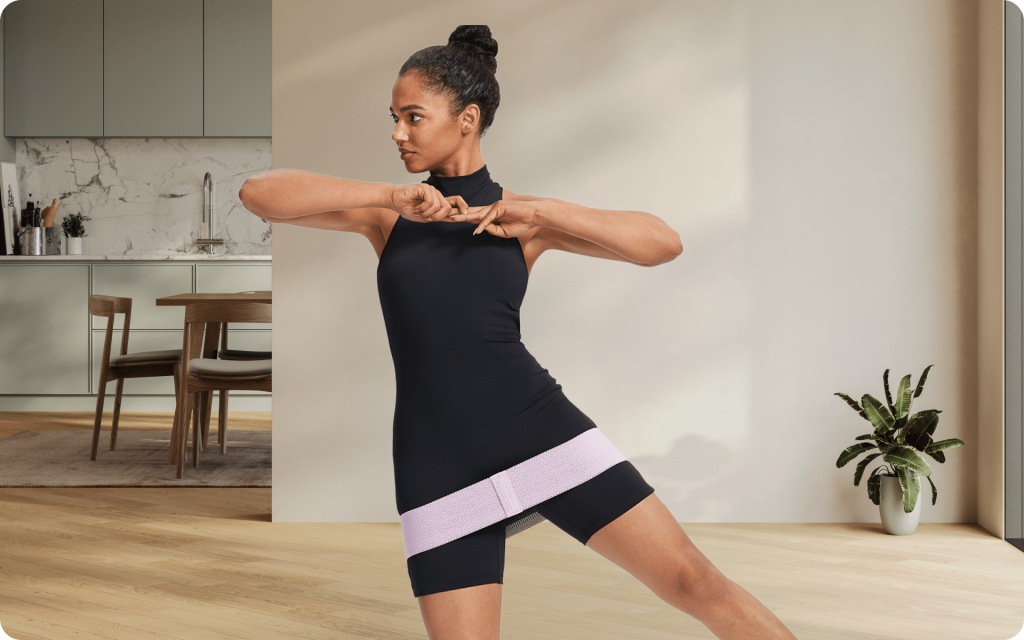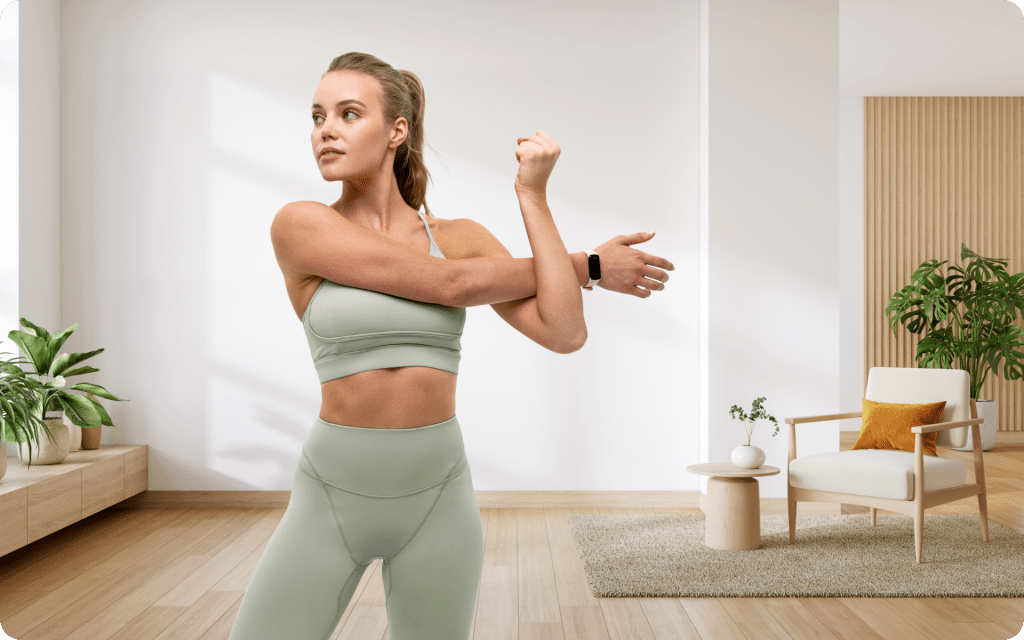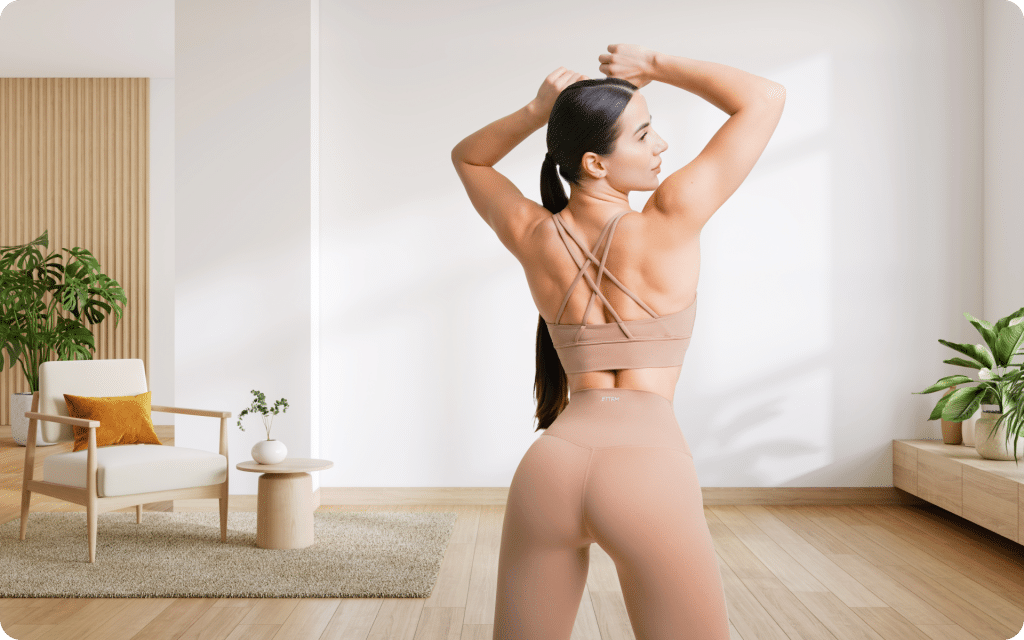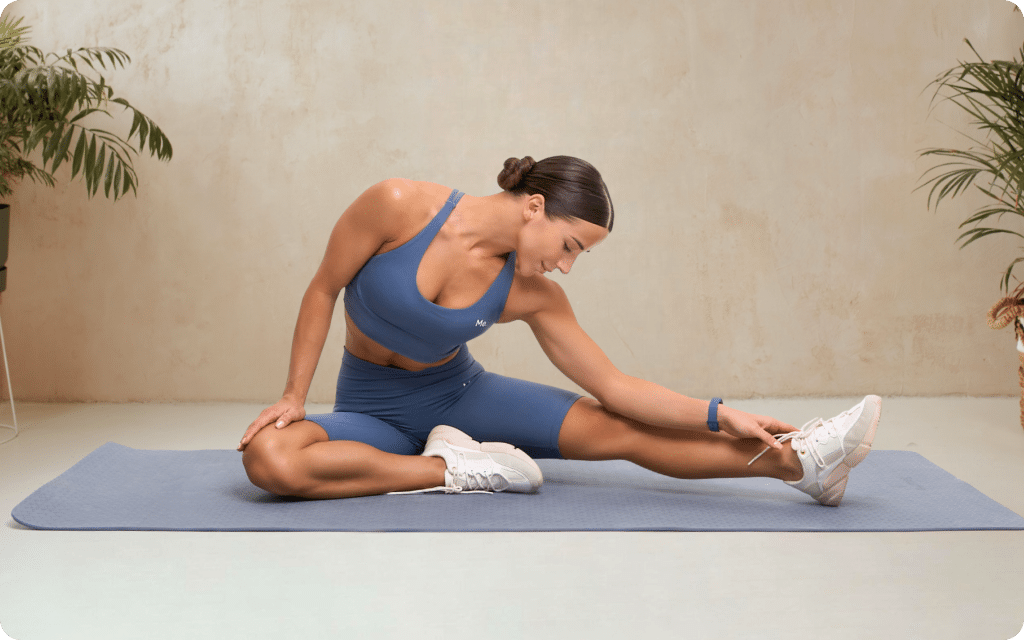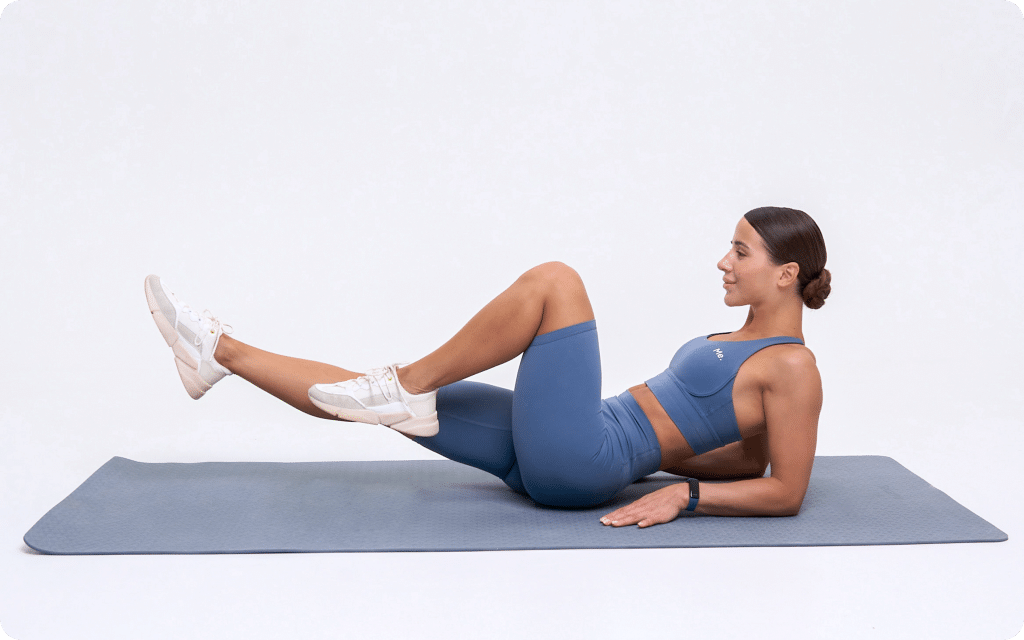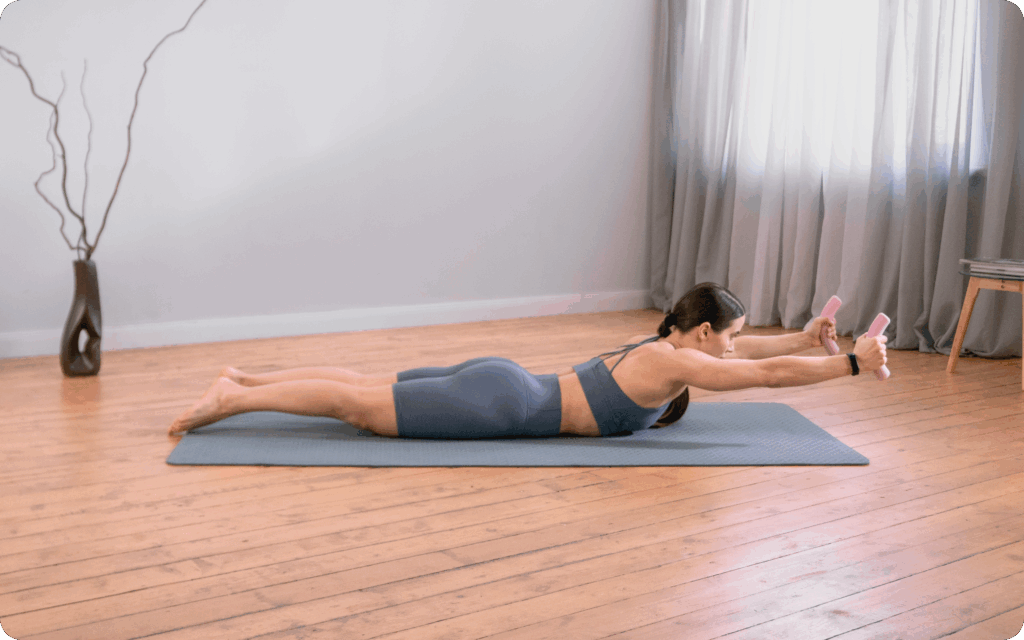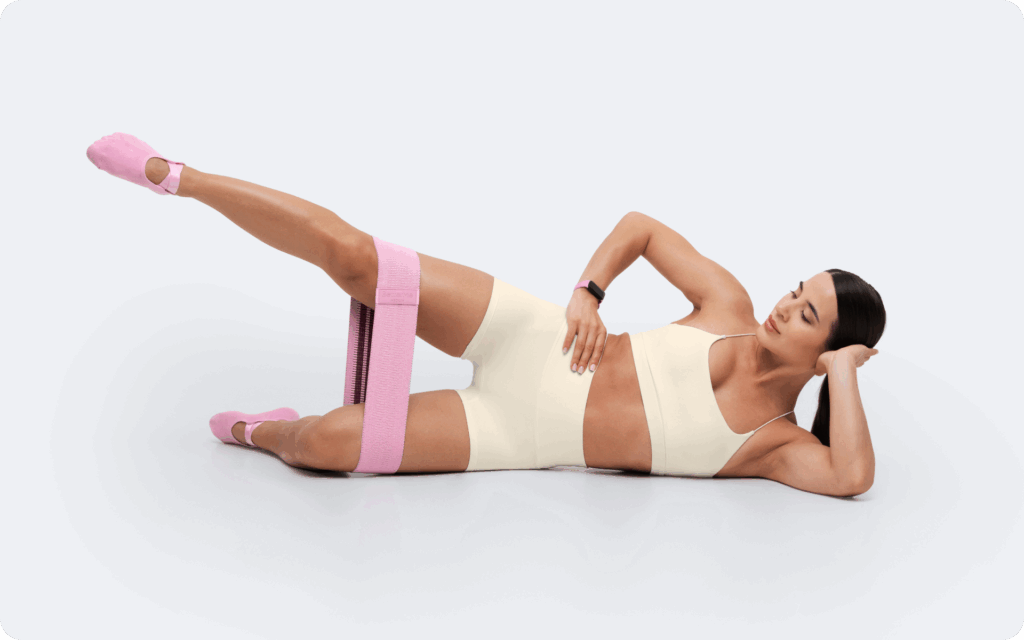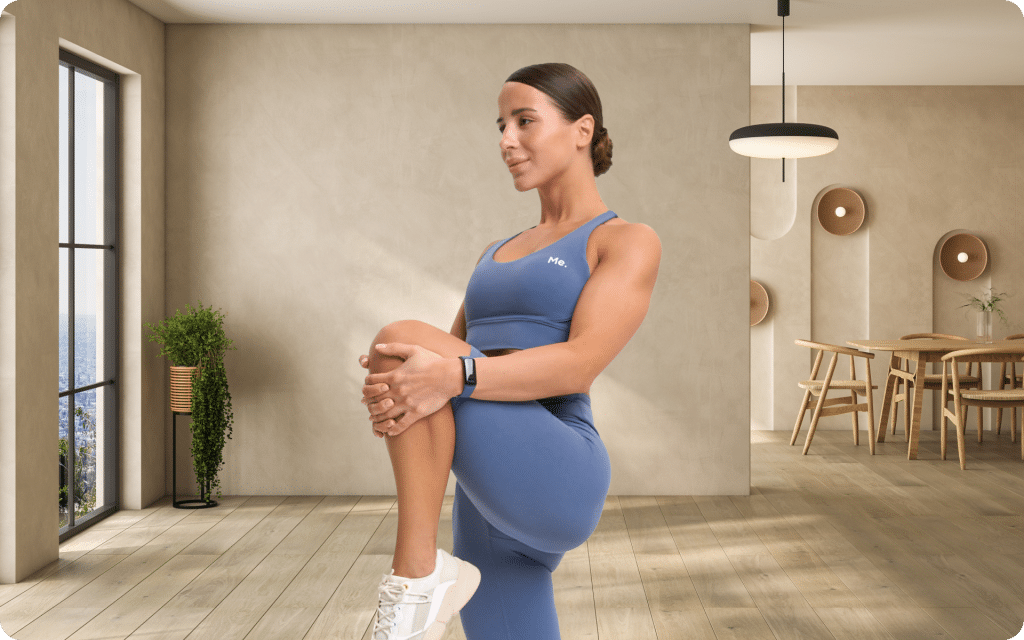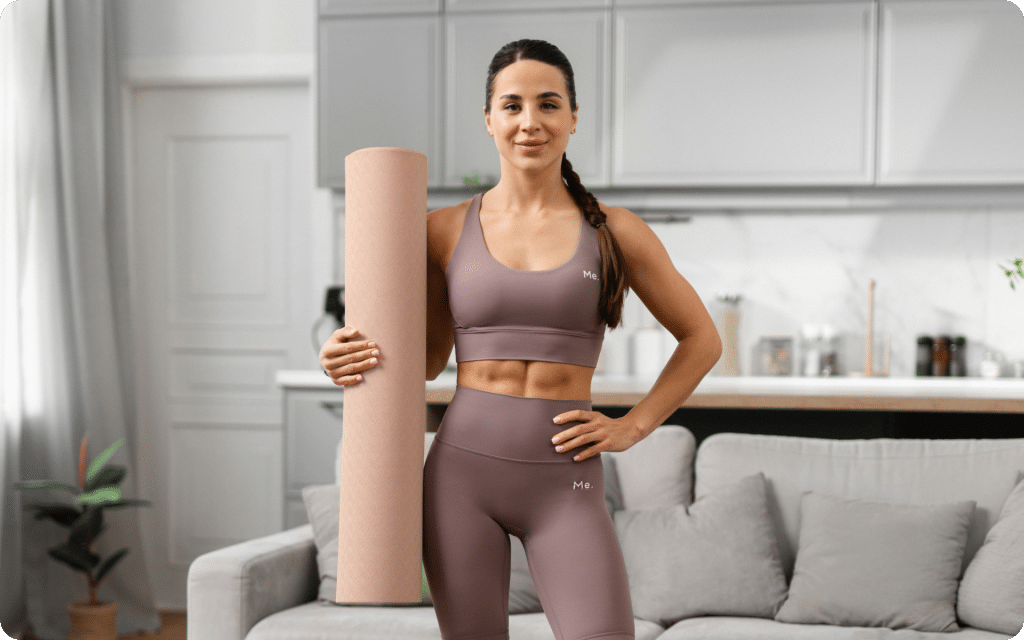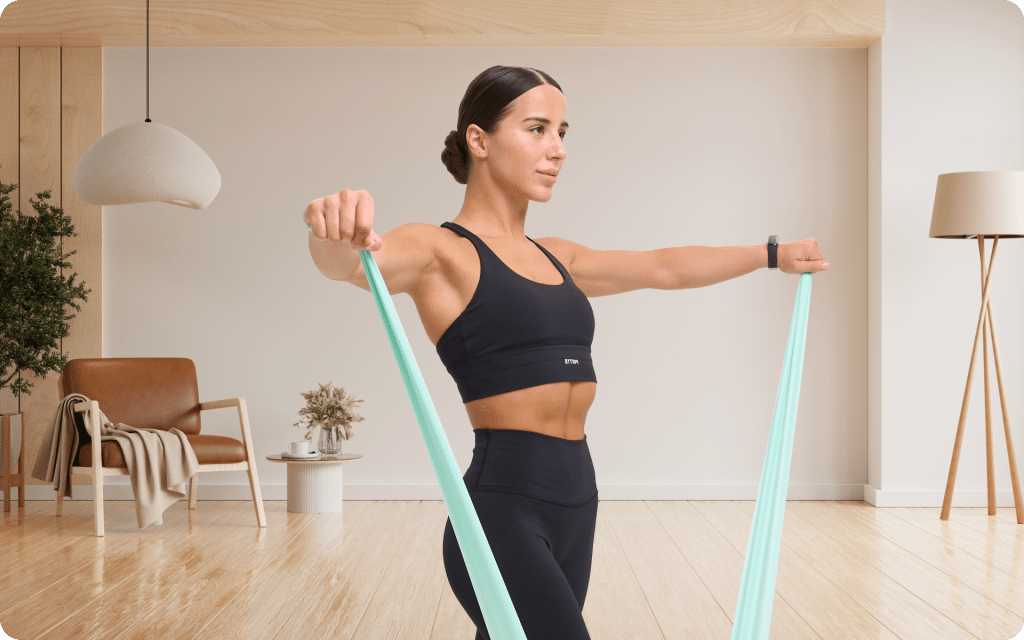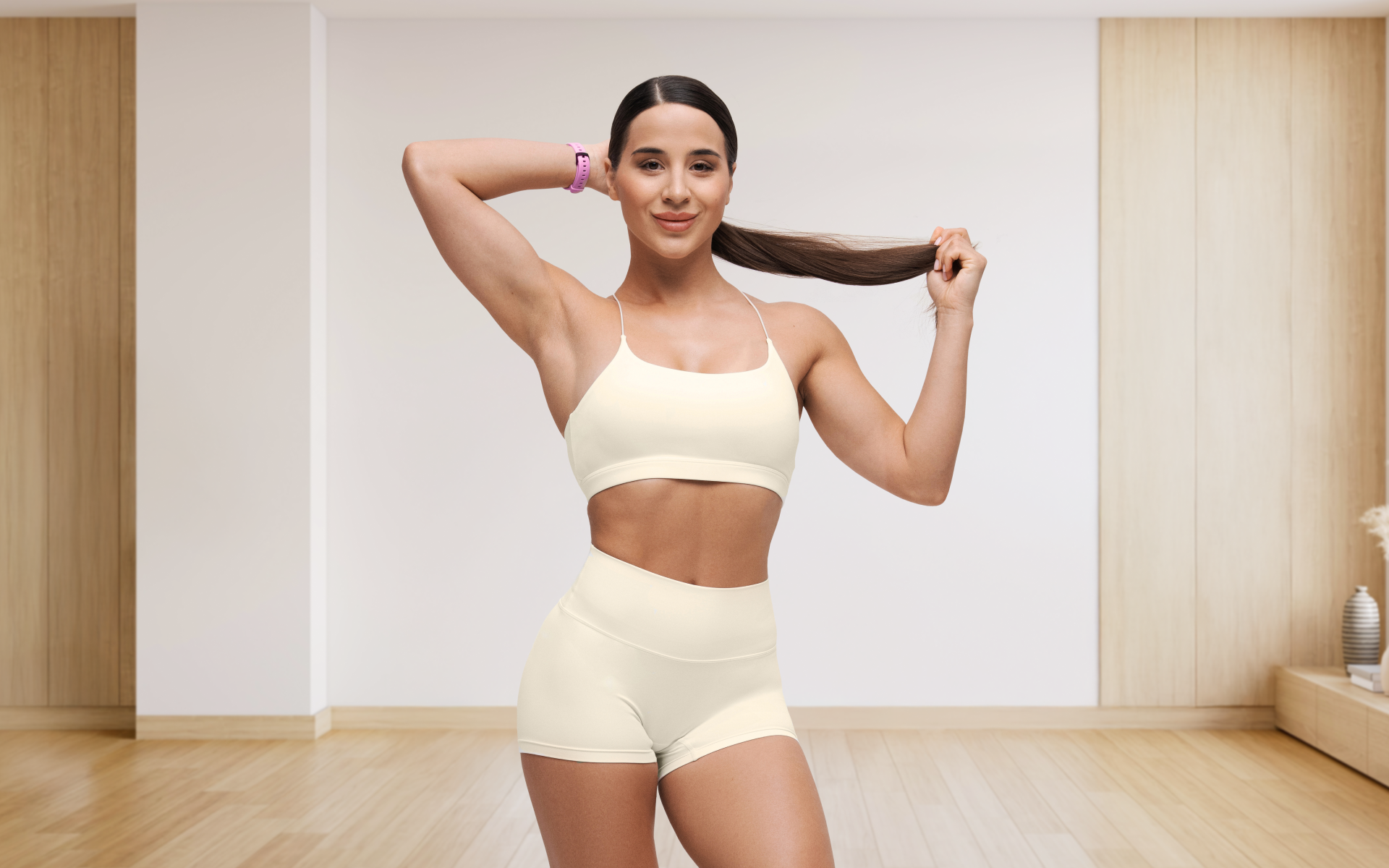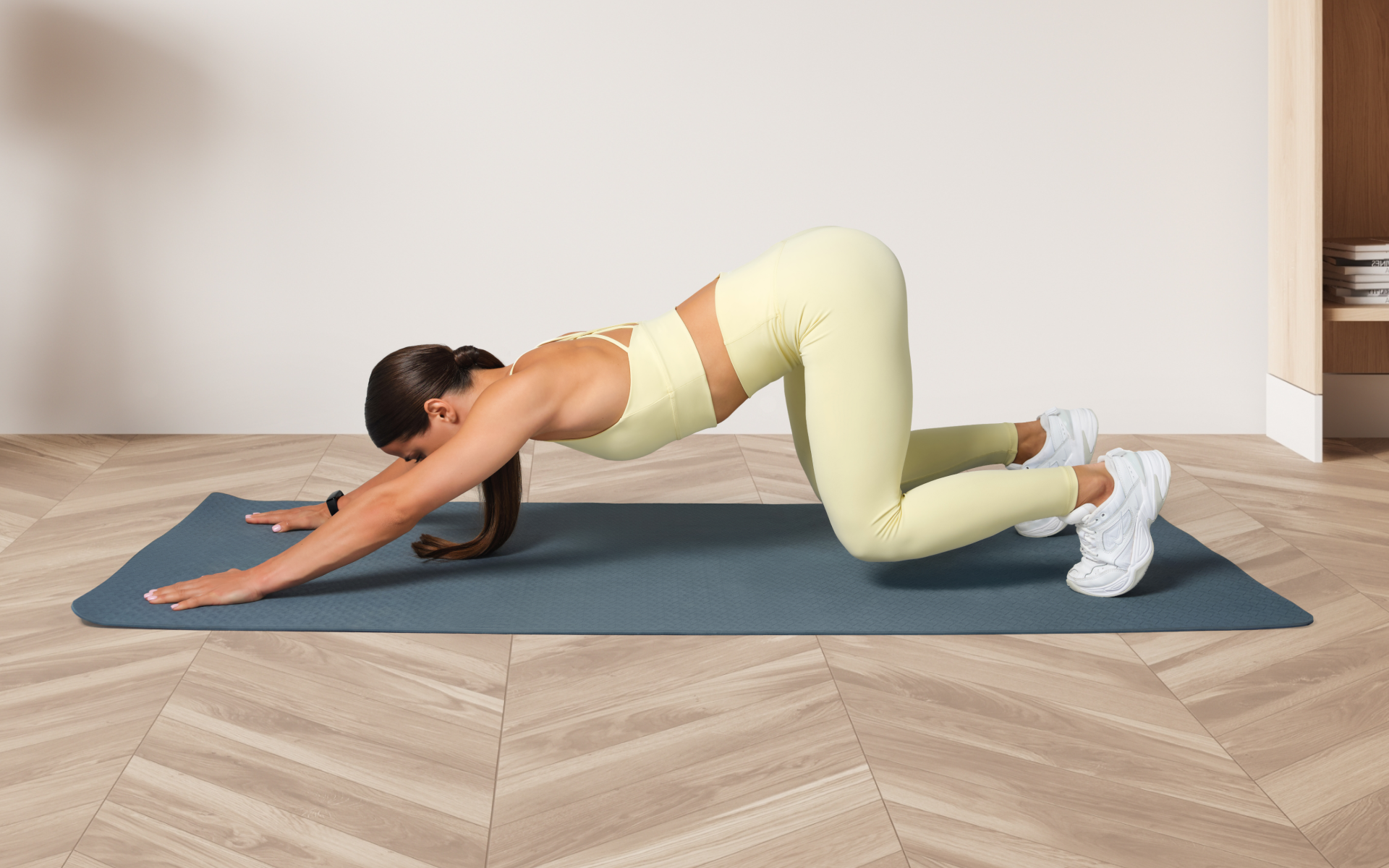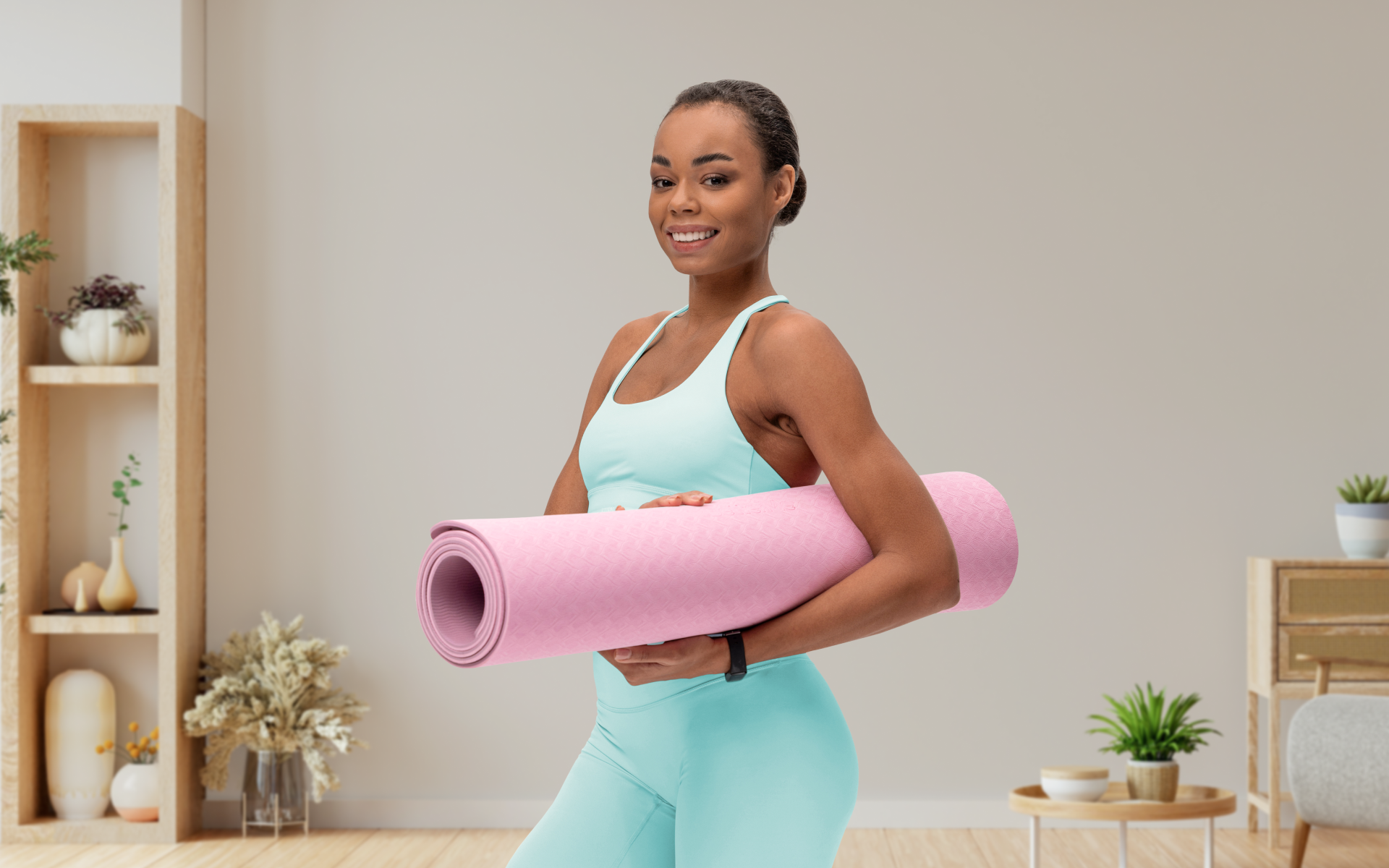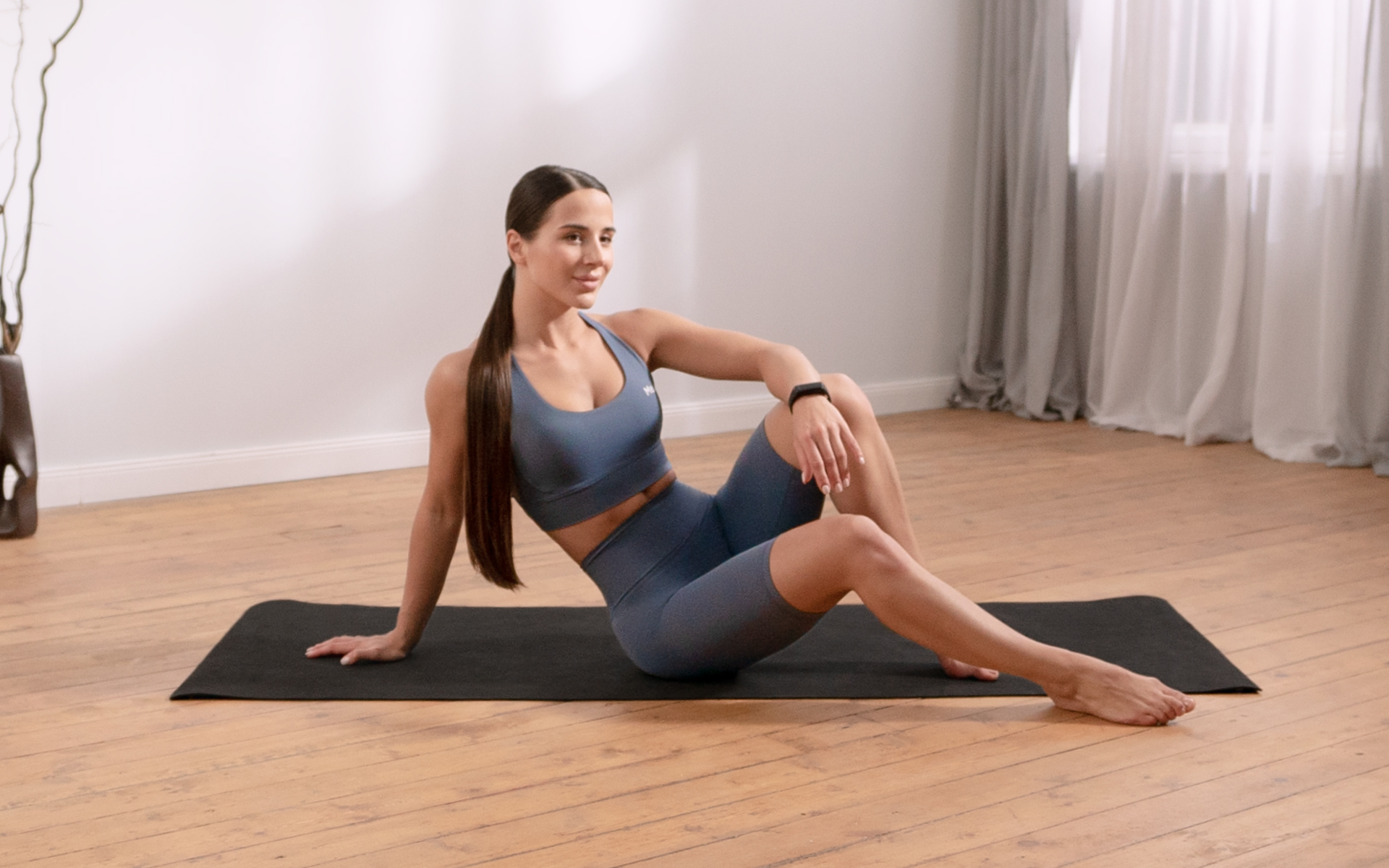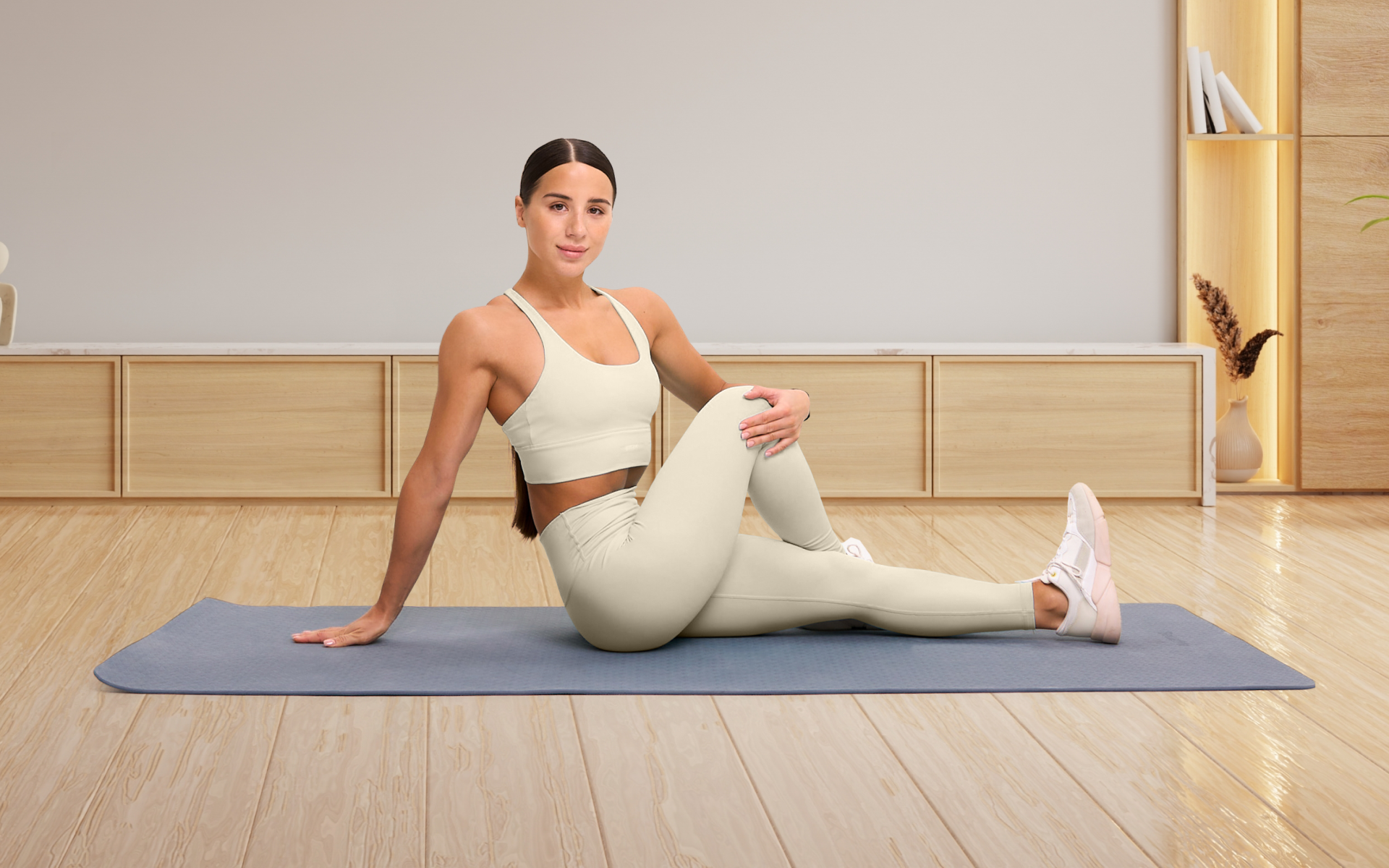Joseph Pilates believed that a healthy body is essential for a fulfilling life. He said, “Physical fitness is the first requisite of happiness” (1) and this is evident in his creation of the Pilates method.
This low-impact method is great for achieving many fitness goals. Those who are looking to loosen a stiff body find it works well. Those who want to build strength and flexibility see results. Even those who need a break from higher-impact workouts can turn to Pilates (2).
It’s no surprise that a growing number of people are seeking out Pilates classes, or at-home equipment, to improve their health and well-being.
Beginners often wonder how much time they should dedicate to the practice to see results. Is 30 minutes of Pilates a day enough?
As with most things fitness, it’s a long game where consistent, dedicated practice leads to lasting changes.
Here’s what you need to know.
Is 30 Minutes of Pilates a Day Enough?
Joseph Pilates didn’t specify an exact session length in his writings. However, the original 34 mat exercises he developed can be completed in about 30-45 minutes. This suggests that a well-structured, focused 30-minute session could deliver significant benefits.
What does a well-structured, focused Pilates session look like?
- A typical beginner’s workout may include 8-10 exercises that target all the major muscle groups.
- You concentrate on proper form and good breathing techniques.
- You transition smoothly between exercises to keep your heart rate up.
- You may alternate exercises that target opposite muscle groups, such as a push-up followed by a back extension.
- You may add props such as a magic circle for extra resistance or the Pilates ball for balance challenges.
- You perform it frequently, at least 3-4 times a week, to see results.
Dive deeper into the pilates workout routine with our dedicated article.
Reasons why BetterMe is a safe bet: a wide range of calorie-blasting workouts, finger-licking recipes, 24/7 support, challenges that’ll keep you on your best game, and that just scratches the surface! Start using our app and watch the magic happen.
Is 30 Minutes of Pilates a Day Enough to Lose Weight?
30 minutes of Pilates a day can contribute to weight loss, but only as part of a more rigorous weight loss program.
How Pilates Supports Weight Loss
Pilates is a low-impact exercise that builds strength, improves flexibility, and enhances alignment (3). It focuses on controlled, precise movements that engage multiple muscle groups. When your muscles work harder, they use more energy, which means you’re burning calories – even if it doesn’t feel intense.
Pilates also strengthens your core (the muscles of your abdomen, lower back, and pelvis) and improves your posture (4). A strong core supports better movement mechanics, which can help you stay active and injury-free (5). Over time, this increased activity can lead to more calorie burning.
Another benefit is stress relief. Pilates incorporates deep, intentional breathing, which can reduce cortisol levels. Cortisol is a stress hormone that can lead to fat storage when elevated, particularly in the abdominal region. By lowering cortisol through Pilates, your body is better equipped to burn fat (6).
What 30 Minutes of Pilates Can Do
A 30-minute session burns around 58-78 calories for most individuals (7). The exact number depends on factors such as your body weight, the intensity of the session, and whether you’re doing mat Pilates or using equipment such as a reformer (a machine designed to add resistance).
While Pilates is great for toning muscles and maintaining mobility, it doesn’t burn as many calories as high-intensity activities such as running or cycling. For example, a 30-minute run can burn roughly 200-350 calories (8). This means that while Pilates helps, it may not be the most effective calorie burner if weight loss is your primary goal.
However, where Pilates shines is its ability to build lean muscle. Lean muscle boosts your metabolism as it requires more energy to maintain, even at rest (9). This means your body will burn more calories over time, even when you’re not working out. If you’re curious about wall Pilates workout for beginners, check out our earlier article.
Weight Loss Requires More Than Exercise
Although Pilates is highly beneficial, weight loss ultimately comes down to one key principle: a calorie deficit. This means you must burn more calories than you consume. Regular Pilates can boost your calorie expenditure, but your diet plays a bigger role. Eating nutrient-dense, whole foods and managing portion sizes are essential for creating this deficit (10).
Sleep and daily activity also matter. Walking more throughout the day, climbing stairs, or engaging in hobbies that get you moving can add to your total calorie burn. Combined with Pilates, this creates a solid foundation for losing weight.
How to Make Pilates More Effective for Weight Loss
If you want to maximize weight loss with Pilates, here are some tips:
- Increase Intensity: Incorporate advanced moves or add resistance using bands, weights, or a reformer. The more challenging the session, the more calories you’ll burn.
- Stay Consistent: Joseph Pilates himself said, “Change happens through movement”. You should aim for at least 4-6 sessions a week to see measurable progress.
- Combine It With Cardio: Pair Pilates with a cardio workout such as walking, swimming, or cycling. Cardio uses more energy and adds variety to your routine.
- Engage the Right Muscles: Practicing with proper form and focusing on engaging your core helps you get the most out of every session.
- Track Your Progress: Keep an eye on how your strength, posture, and energy levels improve. Over time, these changes will make you feel better and contribute to achieving a slimmer physique.
Read more: Pilates Body Vs Gym Body: A Clear Comparison of Results and Approach
Can You Lose Belly Fat with Pilates?
Doing lots of core-focused exercises, without making changes to your diet and activity, won’t directly melt fat off your belly.
Spot reduction, or the idea that you can choose where your body burns fat by working out a specific area, doesn’t work. When your body burns fat, it pulls from fat stores all over – not just the area you’re exercising (11).
Pilates may not burn as many calories as high-intensity activities such as running or cycling, but it still contributes to your energy expenditure. Moderate Pilates sessions can burn around 116-156 calories per hour depending on your weight, intensity level, and specific movements (7).
Over time, regular Pilates sessions combined with a calorie-controlled diet can lead to fat loss across the body, including the belly.
While you can’t lose belly fat with Pilates alone, it can be a valuable tool in your overall fitness and fat-loss strategy.
What Is an Effective 30-Minute Pilates Workout for Every Day?
Ideally, you should have a rest day in between Pilates sessions to allow your muscles time to recover. However, if you want to incorporate Pilates into your daily routine, the exercises listed below could be helpful.
These exercises are arranged in a logical order to warm you up, challenge different muscle groups, and cool you down.
1. The Hundred
Targets: Abdominals, shoulders, chest, and legs
Steps:
- Lie flat on your back with your legs lifted to a 45-degree angle. Your arms should be straight alongside your body.
- Curl your head, neck, and shoulders off the mat, keeping your gaze toward your belly.
- Extend your arms forward and slightly off the floor, hovering parallel to your thighs.
- Start pumping your arms up and down in small, controlled motions as you inhale for five counts and exhale for five counts.
- Complete 10 cycles for a total of 100 arm pumps.
2. Roll-Up
Targets: Abdominals, spine, hip flexors
Steps:
- Lie on your back with your legs extended and your arms stretched overhead. Bring your arms forward as you inhale.
- Slowly peel your upper body off the mat, one vertebra at a time, reaching your arms toward your toes as you exhale.
- Keep your core engaged and legs grounded.
- Roll back down with control, maintaining the curved shape of your spine.
- Repeat this movement 5-7 times.
3. Single Leg Stretch
Targets: Abdominals, hip flexors, and thighs
Steps:
- Lie on your back with your knees bent in a tabletop position.
- Lift your head, neck, and shoulders off the mat, looking toward your chest.
- Extend your right leg straight out at a 45-degree angle while holding your left knee with both hands.
- Switch legs, extending your left leg while bringing your right knee toward your chest.
- Continue alternating for 10-12 repetitions per leg.
4. Spine Stretch Forward
Targets: Spine, hamstrings, and shoulders
Steps:
- Sit tall on the mat with your legs extended straight in front of you, hip-width apart. Flex your feet.
- Extend your arms forward at shoulder height. Sit as tall as possible, lengthening your spine.
- Exhale as you slowly curve your spine forward, reaching your hands past your feet without collapsing your chest.
- Return to the sitting position as you inhale.
- Repeat 5-8 times.
BetterMe: Health Coaching app helps you achieve your body goals with ease and efficiency by helping to choose proper meal plans and effective workouts. Start using our app and you will see good results in a short time.
5. Saw
Targets: Obliques, spine, and hamstrings
Steps:
- Sit with your legs extended out in a wide V position. Flex your feet and stretch your arms out to your sides at shoulder-height.
- Rotate your torso to the right as you exhale, reaching your left arm toward your right foot.
- Focus on keeping both hips grounded and engaging your obliques as you twist and reach.
- Return to center as you inhale, then twist to the left.
- Do 5 twists per side.
6. Swan
Targets: Back muscles, glutes, and shoulders
Steps:
- Lie face down on your mat with your hands beneath your shoulders, your elbows bent, and your legs extended behind you.
- Press your hands into the mat and lift your upper body as you extend your spine.
- Keep your lower ribs grounded and avoid overextending your lower back.
- Lower back down with control.
- Repeat 6-8 times.
7. Side Kick
Targets: Outer thighs, glutes, and obliques
Steps:
- Lie on your right side with your body in a straight line and your head supported by your right hand. Place your left hand in front of your chest for support.
- Lift your left leg to hip height. Swing it forward in a controlled kick, flexing your foot, and then sweep it backward as you point your toes.
- Keep your torso stable and abs engaged throughout.
- Perform 8-10 kicks on each leg before switching sides.
8. Seal
Targets: Core, inner thighs, and spine
Steps:
- Sit on your mat with your knees bent and your feet off the floor. Grab the outside of your ankles with your hands, bringing your knees close to your chest.
- Balance on your sit bones, maintaining the shape of your body.
- Roll back onto your upper spine as you inhale, then roll back up to sitting as you exhale.
- Clap your feet together three times at the top of the movement to engage your inner thighs.
- Repeat for 6-8 rolls.
For more details about wall Pilates workout 10 minutes, take a look at our prior publication.
Read more: Is Pilates At Home As Effective As Going To A Class?
Can Pilates Be Your Only Exercise?
If you’re striving for comprehensive fitness, Pilates alone may not be enough.
The World Health Organization (WHO) and other major health organizations recommend the following for adults (12):
- Cardiovascular Exercise: At least 150-300 minutes of moderate aerobic activity, or 75-150 minutes of vigorous-intensity activity per week.
- Strength Training: Activities that work all major muscle groups at least two days a week.
- Flexibility and Mobility: Regular stretching or activities that improve range of motion and balance, particularly as we age.
To achieve optimal fitness, your program should target cardiovascular fitness, muscular strength, flexibility, balance, and more.
How Does Pilates Measure Up?
Where Pilates Wins
- Core Strength and Muscle Tone
Pilates is unmatched for developing a strong core. The precise, controlled movements target the deep abdominal muscles, back, and pelvis (4). Over time, this builds muscular endurance and promotes a toned, balanced physique. - Flexibility and Mobility
Pilates emphasizes lengthening muscles through dynamic stretches. Many exercises, such as the roll-up or the spine stretch forward, improve the flexibility of the hamstrings, spine, and shoulders. It also helps maintain joint mobility, which helps prevent stiffness as you age (13). - Balance and Stability
Pilates teaches you to engage stabilizing muscles, which improves balance and coordination. This is particularly beneficial for reducing the risk of falls, particularly in older adults (14). - Mind-Body Component
The mindfulness aspect of Pilates encourages you to focus on breathing, alignment, and controlled movements. This connection enhances your mental focus, reduces stress, and creates a sense of calm (15).
Where Pilates Falls Short
- Cardiovascular Fitness
Pilates isn’t typically considered a cardio workout. While some advanced routines, such as those on the reformer, may elevate your heart rate temporarily, Pilates lacks the sustained intensity needed for aerobic benefits.
If your goal is to meet the recommended 150 minutes of moderate aerobic activity per week, you’ll need to supplement with activities such as walking, running, cycling, or swimming.
- Building Maximal Strength
Although Pilates strengthens muscles, it uses body weight or light resistance. It may not be sufficient to build maximal strength like you would with heavy weightlifting.
If you’re aiming to improve bone density or enable your body to handle significant loads (a key part of functional fitness), resistance training should be added to your routine.
- High-Intensity Conditioning
Pilates doesn’t incorporate high-impact, explosive movements like plyometrics or sprinting. For those who are interested in agility, speed, or anaerobic conditioning, other forms of exercise may be better suited.
How Many Minutes of Pilates a Day Is Effective?
30-45 minutes of Pilates a day is generally considered to be effective. However, the duration can vary depending on your fitness level and goals.
Unlike workouts that are reliant on high repetitions or pushing big weights, Pilates is about precision and control. Every movement should be performed mindfully, with your muscles fully engaged and your breath synchronized. Even a short session can be incredibly effective if done with proper technique.
Consider which other forms of physical activity you currently do and how they contribute to your overall fitness. Pilates can complement many other exercise regimes by targeting different muscle groups, improving core strength and stability, and promoting flexibility.
Yes, Pilates can shape your body by building your core strength, improving your posture, enhancing your flexibility, and increasing your muscle endurance. However, combining it with cardio and a healthy diet maximizes overall fitness. Pilates and yoga burn similar amounts of calories depending on intensity, but Pilates often focuses more on core strength and muscle toning, which can support fat loss over time. For higher calorie burn, select dynamic yoga styles such as Vinyasa or Power Yoga. Practicing Pilates once a week can bring modest benefits such as improved posture and better core activation, but for noticeable results such as increased strength or body toning, aim for 2-3 sessions per week or more. Yes, Pilates strengthens and tones your abdominal muscles through targeted movements. With consistency and a healthy diet to reduce overall body fat, Pilates can help your abs become more defined.Frequently Asked Questions
Frequently Asked Questions Does Pilates really get you in shape?
Does yoga or Pilates burn more fat?
Is Pilates once a week enough to see results?
Can I get abs from Pilates?
The Bottom Line
Is 30 minutes of Pilates a day enough? Absolutely! A daily 30-minute Pilates practice can improve your core strength, boost your flexibility, improve your posture, and support your overall fitness. However, for well-rounded fitness, you should consider supplementing Pilates with cardio and resistance training to maximize results.
DISCLAIMER:
This article is intended for general informational purposes only and does not serve to address individual circumstances. It is not a substitute for professional advice or help and should not be relied on for making any kind of decision-making. Any action taken as a direct or indirect result of the information in this article is entirely at your own risk and is your sole responsibility.
BetterMe, its content staff, and its medical advisors accept no responsibility for inaccuracies, errors, misstatements, inconsistencies, or omissions and specifically disclaim any liability, loss or risk, personal, professional or otherwise, which may be incurred as a consequence, directly or indirectly, of the use and/or application of any content.
You should always seek the advice of your physician or other qualified health provider with any questions you may have regarding a medical condition or your specific situation. Never disregard professional medical advice or delay seeking it because of BetterMe content. If you suspect or think you may have a medical emergency, call your doctor.
SOURCES:
- The origins of Western mind–body exercise methods (2016, pmc.ncbi.nlm.nih.gov)
- Pilates: how does it work and who needs it? (2011, pmc.ncbi.nlm.nih.gov)
- Effects of a Pilates exercise program on muscle strength, postural control and body composition: results from a pilot study in a group of post-menopausal women (2015, pmc.ncbi.nlm.nih.gov)
- The Relationship of Trunk Muscle Activation and Core Stability: A Biomechanical Analysis of Pilates-Based Stabilization Exercise (2021, mdpi.com)
- The real-world benefits of strengthening your core (2012, health.harvard.edu)
- Impact of a stress management program on weight loss, mental health and lifestyle in adults with obesity: a randomized controlled trial (2018, pmc.ncbi.nlm.nih.gov)
- What is the exercise intensity of Pilates? An analysis of the energy expenditure, blood lactate, and intensity of apparatus and mat Pilates sessions (2021, pubmed.ncbi.nlm.nih.gov)
- Calories burned in 30 minutes for people of three different weights (2021, health.harvard.edu)
- Increasing muscle mass to improve metabolism (2013, pmc.ncbi.nlm.nih.gov)
- Optimal Diet Strategies for Weight Loss and Weight Loss Maintenance (2021, jomes.org)
- Effect of abdominal resistance exercise on abdominal subcutaneous fat of obese women: a randomized controlled trial using ultrasound imaging assessments (2015, pubmed.ncbi.nlm.nih.gov)
- WHO Guidelines on Physical Activity and Sedentary Behaviour. (2020, ncbi.nlm.nih.gov)
- Pilates for improvement of muscle endurance, flexibility, balance, and posture (2010, pubmed.ncbi.nlm.nih.gov)
- The effectiveness of Pilates on balance and falls in community dwelling older adults (2016, pubmed.ncbi.nlm.nih.gov)
- The effects of pilates on mental health outcomes: A meta-analysis of controlled trials (2018, sciencedirect.com)
